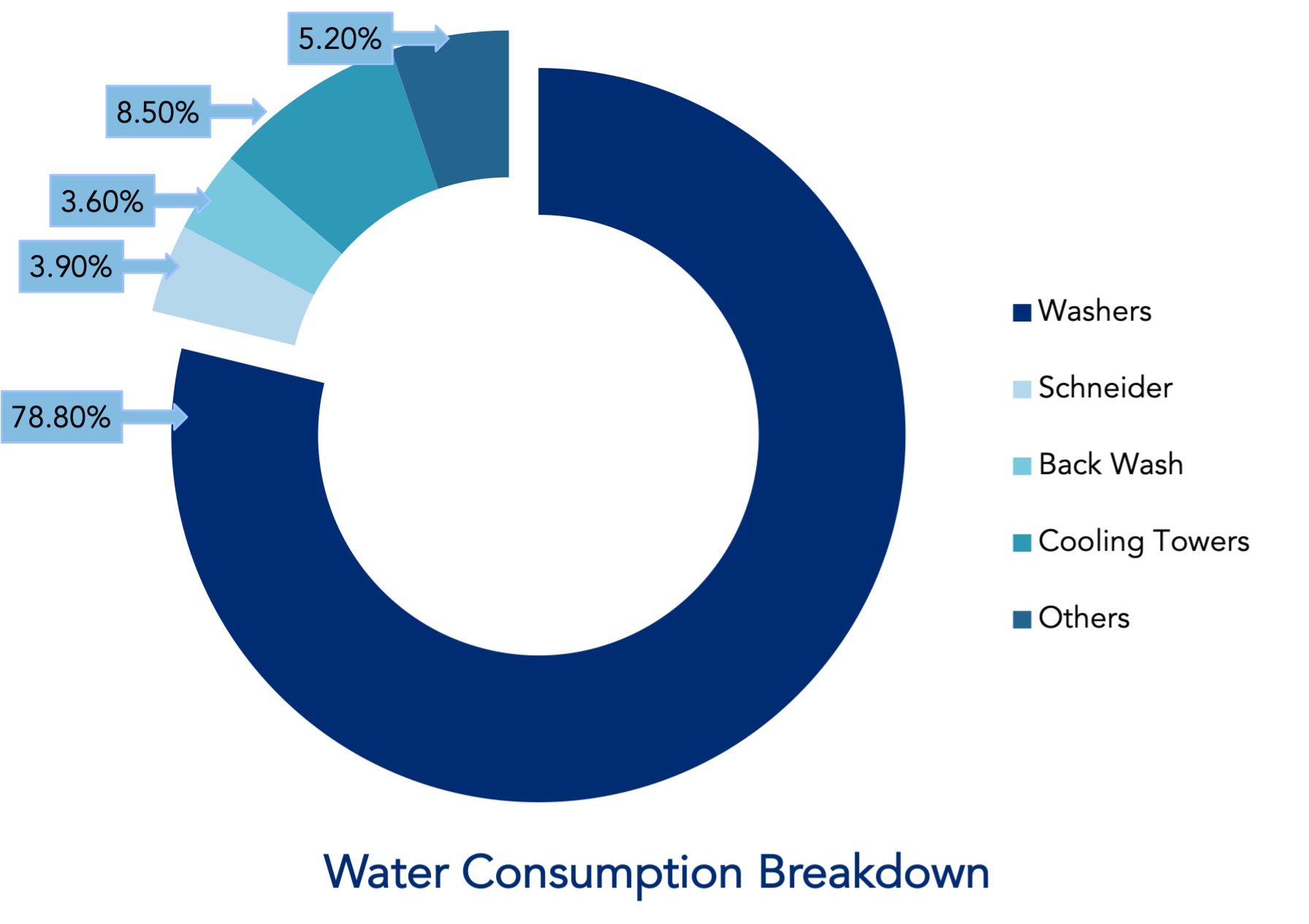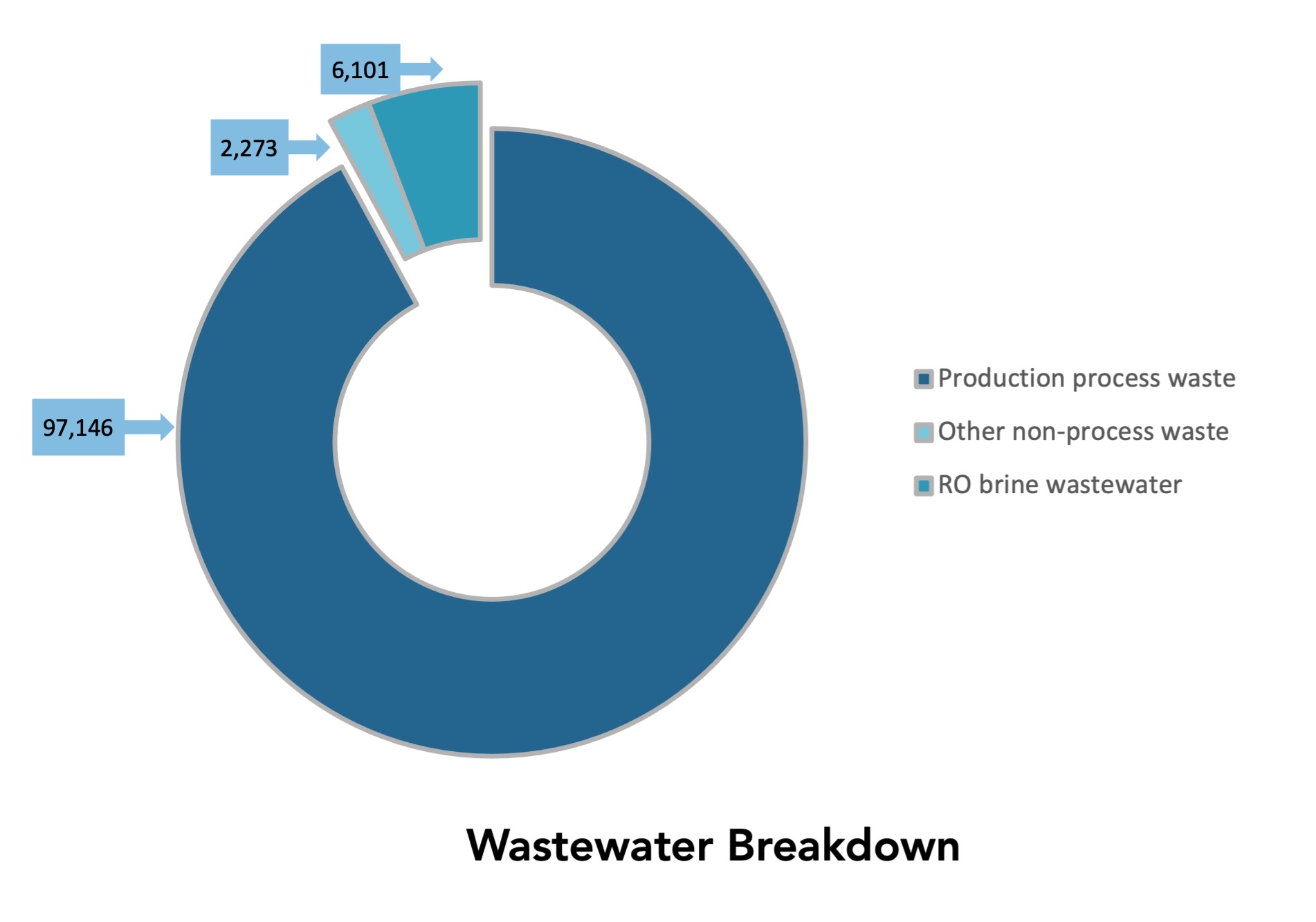Case summary
Crown is a leading global packaging supplier headquartered in Philadelphia, the United States of America (USA). Crown Bevcan operates 17 facilities across Europe, the Middle East, and North Africa. Crown has five can manufacturing plants in Jordan, the United Arab Emirates (UAE), Tunisia and Saudi Arabia. Crown Jordan has a 40,000 square metre property with ca. 20,000 square metres of factory and warehouses and a production capacity of 1,605 million aluminium cans annually on three production lines. Crown Jordan achieved several awards throughout the previous years such as the King Abdullah Award for Excellence in 2001, the 2004 Beverage Overall Best Plant in Business, 2006 Beverage Best Project, 2010 Beverage Best Improved Plant.
The facility in Jordan is located in the industrial city of Sahab, ca. 24 kilometres southeast of Amman. Water is supplied through two sources, the municipality line and tankers. The annual raw water consumption amounts to approximately 115,000 cubic metres (m3) with an average cost of 2.40 Jordanian Dinar per cubic metre (JOD/m3). The majority of this water is disposed of as wastewater after all manufacturing processes. Crown’s goal is to reach zero waste discharge by 2030. This stems from the headquarter’s Twentyby30 program which reflects the company’s commitment towards sustainability. Despite the innovative work done by their team over the past years, there are still steps to be done before reaching the set goal. By upgrading the tertiary wastewater treatment plant, upgrading or replacing the current Reverse Osmosis (RO) plant and implementing best practices in water management, 15% of the Non-Product Output (NPO) water can be saved, which equates to an annual saving of JOD 38,000 (ca. USD 54,000).
Key information
| Company Name | Crown Middle East Can Co. |
| Location | Amman, Jordan |
| Website | www.crowncork.com |
| Year of foundation | 1994 |
| Industrial sector / sub-sector | Packaging Materials & Supplies / Metal cans |
| Products & volumes | Aluminium cans for beverages, 1,605 Mio cans |
| No. of employees | 225 employees |
| Total water consumption | 115,000 m3 per year |
The challenge
Since its establishment in 1994, limited modifications on water and wastewater treatment systems were made and the treatment systems were approaching their lifetime max. This poses risks to the company of having potential interruption to production, or at the least having to purchase contractor-supplied water with sufficient quality, but with a premium price. Hence, it is necessary to upgrade existing input water treatment systems and optimize their recovery. On another hand, the company needs to address treated wastewater reuse for utilities and non-domestic use.
Water efficiency need
Upon conducting a detailed analysis for water flow and wastewater production, the following table summarizes Water Efficiency Measures (WEMs) that can be implemented to improve water efficiency at the facility and reduce wastewater discharge. The measures focus primarily on installing tertiary treatment unit, upgrade or replace the current RO system, and adopt best practices in water management. The costs and payback periods for each intervention are described in detail below:
| # | Title of saving measure | Water saving (m³/year) | Cost saving (JOD/year) | Investment cost (JOD) | Simple payback in years | Raw water saving (in %) |
| 1 | Installing new tertiary treatment system with capacity of 37 m3/day including a new RO unit to treat water after the tertiary treatment system | 13,700 | 30,000 | 34,000 | 1.1 | 12 |
| 2 | Option1: Upgrading the current RO system | 2,900 | 6,300 | 10,000 | < 1.5 | 2.5 |
| 3 | Option 2: Installing new RO system | 80,000 | 13* | |||
| 4 | Best Practices in water management | 1,200 | 2,500 | 2,500 | 1.0 | 1 |
| Total | 17,800 | 38,800 | 46,500 or 116,500 |
| 15 | |
* Although this option has a much longer payback, installing a new RO system might become necessary as the current one becomes maintenance intensive
Potential Impact
- Saving up to 17,800 m3/year of freshwater supplies with a total value of JOD 38,800 (ca. USD 54,000) by upgrading the RO system, applying tertiary treatment and reuse, and adopt best practices of water management measures
- Become one step closer to achieving their goal of zero discharge by 2030
CEWAS (2023): Crown Can Infographic(PDF)
This infographic summarises key information concerning Crown Can.
CROWN
This website presents Crown’s strategy and goals for accelerating sustainability that make up their Twentyby30 program


